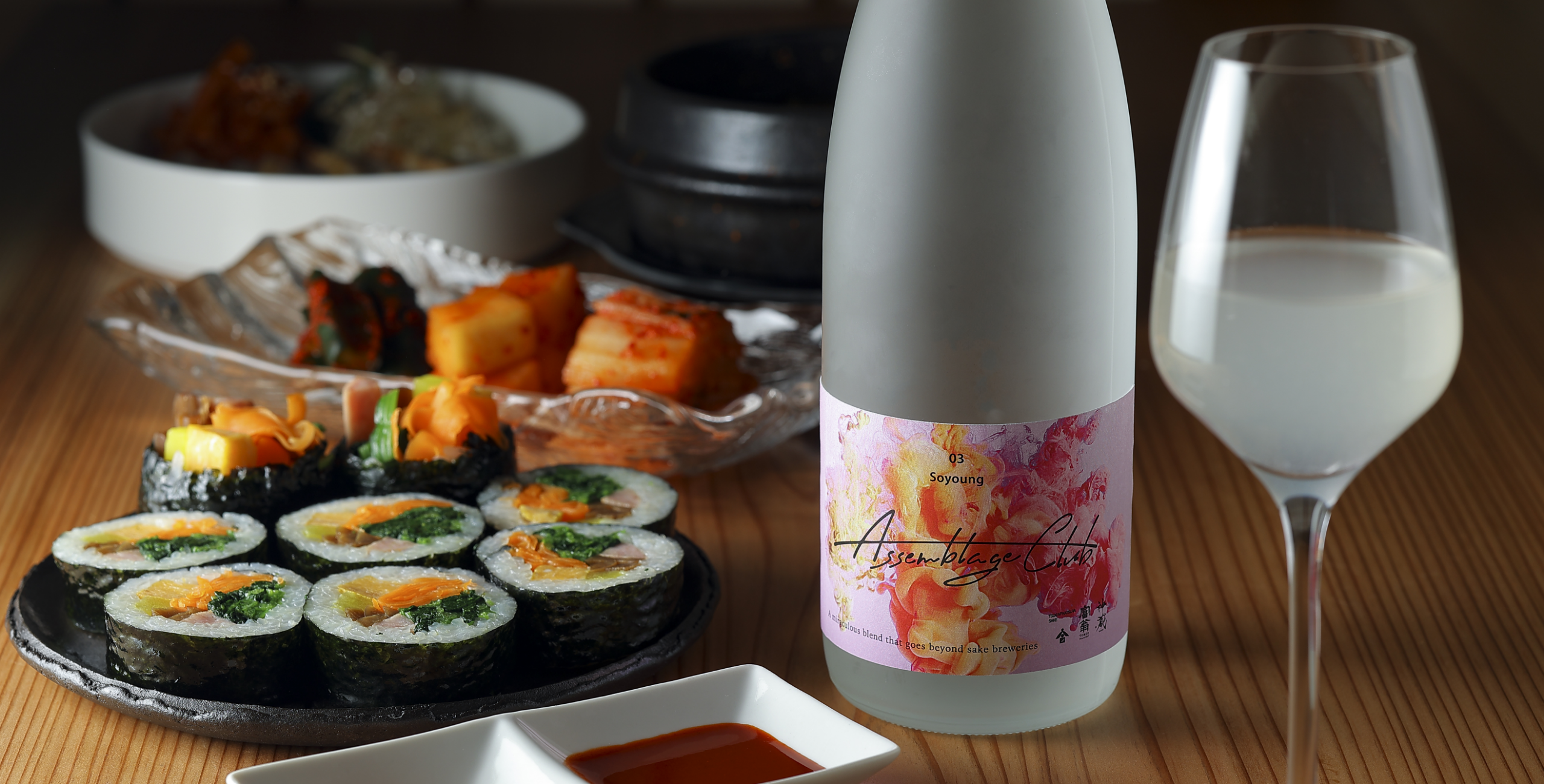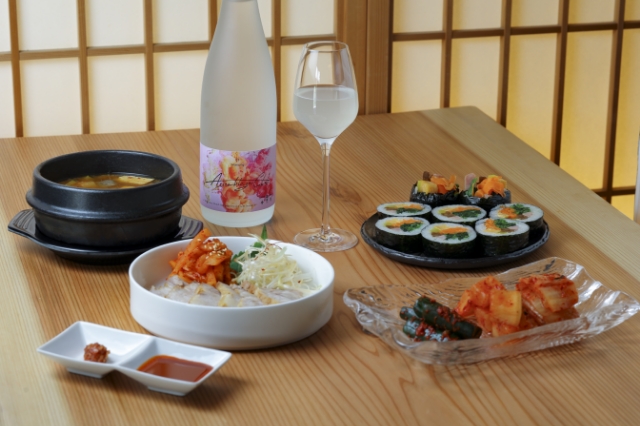
Application deadline: End of June
Scheduled to ship around 7/15
Gastronomic delights from around the world await
Part 3 [03].
Why Sake for Korean Food: A Journey to Korea
Korean culture has become a social phenomenon with the term "Hallyu" (Korean Wave), which includes food, entertainment, and more. The intermingling of cultures is not a new phenomenon; Korean towns have existed throughout Japan since ancient times, and Korean food culture, including yakiniku and kimchi, is now indispensable to the Japanese. One of the reasons why Korean food is so familiar to the Japanese is that the staple food is rice, which means that people want the taste of rice to be delicious. Another similarity with Japan is the many fermented food cultures, including kimchi, salted fish, and makgeolli. Sake, made from rice and born through fermentation, is a natural meeting point for Korean cuisine.

There is a secret behind the spiciness Sake Becomes a Friend of Taken's in Korea
Encounter.
Fermentation and Umami Taste Considered from Kimchi
In Korea, which, like Japan, is based on an agricultural culture, kimchi is said to have been a means of preserving vegetables that were in short supply during the cold winters. Salted Chinese cabbage and other vegetables are coated with a sauce called yangnyeom, a mixture of chili peppers, salted red pepper, and other ingredients, and fermented. Like Japanese pickles, lactic acid fermentation improves the flavor and umami. What makes it different from Japanese pickles is that the addition of salted marine products further enhances the umami flavor. Kimchi, which is fermented for a long time and served with the pickling liquid, is said to contain more lactic acid bacteria and citric acid than Japanese pickles. In Japan, kimchi sold in supermarkets often contains salted shrimp, but in Korea, where kimchi is made, there are more than 40 different varieties, including cod entrails, squid, clams, and shrimp. The potential of salted fish as a "snack" is evident. It is said that there are more than 200 kinds of kimchi in Korea, depending on the season, climate, ingredients, etc. Furthermore, there are many Korean dishes in which kimchi is indispensable, such as kimchi jjigae, kimchi jjim (steamed meat and kimchi), possum (boiled pork), bibimbap, and as a side dish to samgyeopsal, and many other dishes that spread around kimchi. . In Korean restaurants, kimchi is brought to the table as a regular dish even if you have not ordered it. In Korea, umami seasonings are as important as soy sauce, miso, and gochujang (red pepper paste), and are sold in supermarkets in Japan. It is clear that "umami" is as important a seasoning as soy sauce, miso, gochujang, and other seasonings.

Photography cooperation: Hanokaya Kyohime

Photography cooperation: Hanokaya Kyohime

Taste of this time
As mentioned above, among the wide range of Korean dishes, we focused on kimchi, which is used as a seasoning or ingredient in stir-fries and simmered dishes, and always appears as a reserve ingredient in any dish, and searched for flavors that go well with kimchi. Kimchi's flavor is a combination of umami from fermentation and acidity from lactic and citric acids. It is characterized by the richness of flavor that comes from variations of salted seafood. As you know, salted fish is also called "Sake-Tobori" in Japan, and is a perfect friend for sake. It is a foul play to have such a best friend hidden behind the kimchi. It is no longer a question of whether it goes well with kimchi or not, but rather, it should be accepted as a friend.
The assemblage of the different brands mille-feuille the good flavors of each brand, while mellowing their individuality and allowing them to accompany the ingredients. You will find many other ingredients and dishes that go well with Korean cuisine.
Now, it is your turn.
Try this Assemblage Club 03 / CODE NAME : Soyoung and start your journey of unknown tastes.
Now, the world's gastronomy
We are waiting for you.
Let's start a great voyage together!

Assemblage Club 03CODENAME : Soyoung
- assemblage recipe
- private
- raw materials
- Rice (domestic),
Rice malt (domestic rice)
- ratio indicating the quantity of polished rice gained from a given quantity of brown rice (nowadays usually expressed as a percent)
- private
- alcohol content
- 13%
- content by volume
- 720ml
- Storage Method
- refrigerated storage
- Place of manufacture
- Tokubei Masuda
Shoten
- sales
- Corporation
Leaf Publications, Inc.




